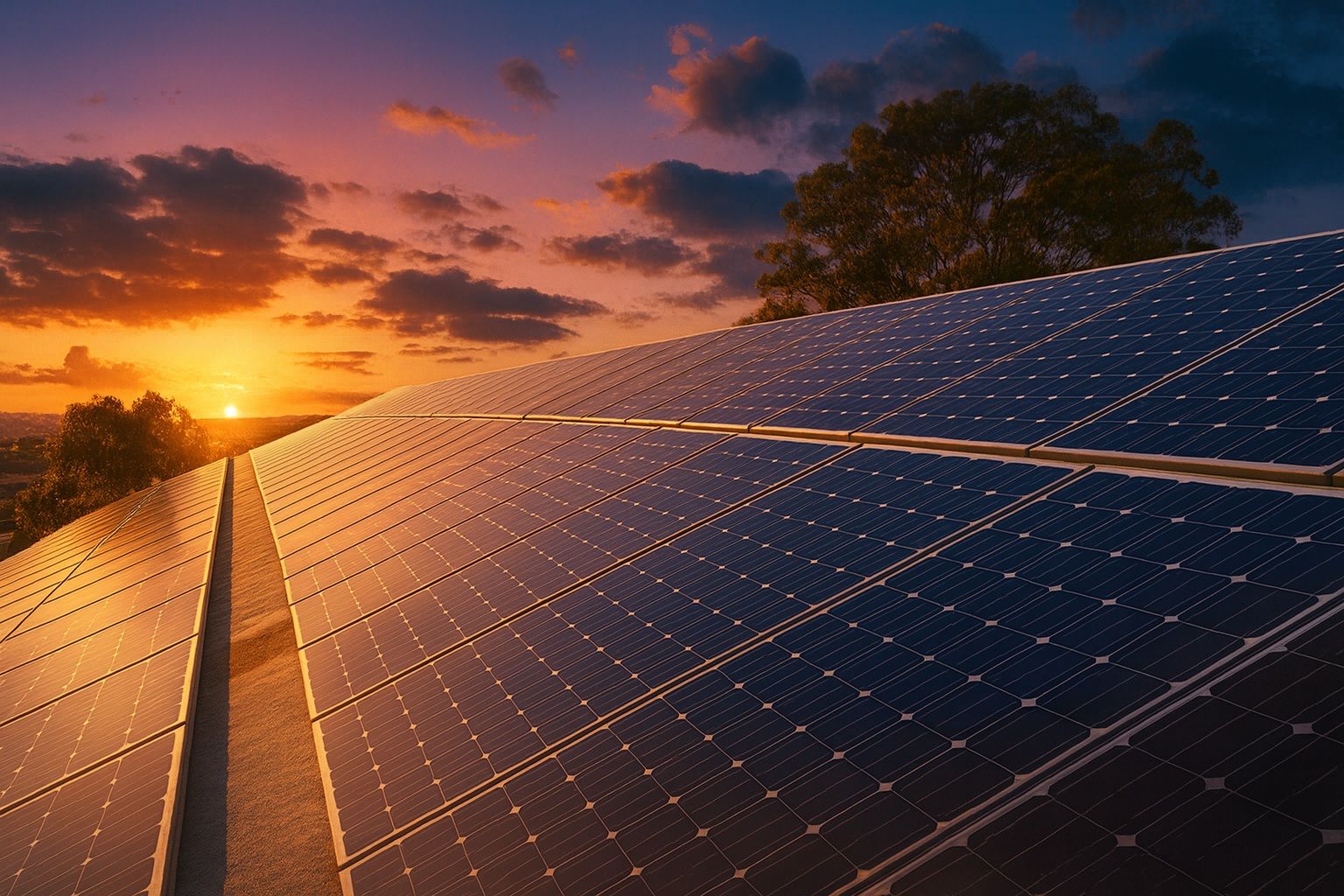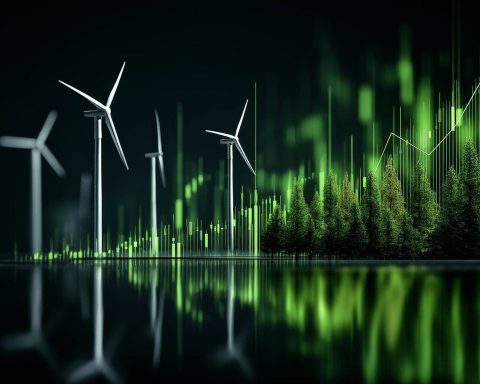- Fast-Track Order: Oregon Gov. Tina Kotek issued an executive order directing state agencies to fast-track permits for wind and solar projects so they can start construction by July 4, 2026 – the new federal deadline to qualify for renewable energy tax credits before they expire [1] [2]. Projects that miss this cutoff must be operational by the end of 2027 to still receive credits [3].
- Trump’s “Big Beautiful” Cutoff: A Trump-backed law dubbed the “One Big Beautiful Bill Act” is phasing out clean energy tax incentives years earlier than planned, slashing support that typically covered 30%–50% of wind and solar project costs [4] [5]. The law (signed on July 4, 2025) accelerates the expiry of federal Investment Tax Credits (ITC) and Production Tax Credits (PTC). Oregon alone could lose ~4 gigawatts of planned wind and solar – enough to power 1 million homes – if projects miss the new deadlines [6].
- Projects at Risk: Oregon currently lags near the bottom nationally in adding renewables to its grid [7], due in part to years-long permitting and grid connection delays. At least 9–11 major Oregon wind and solar projects are now in jeopardy of missing the tax credit window [8]. Even “shovel-ready” developments that have permits face massive transmission queue backlogs waiting to connect to the grid [9].
- State’s Response: Kotek’s executive order tells agencies to “take all steps necessary” to cut red tape and prioritize renewable projects that can meet the deadline [10]. The order targets projects that have utility contracts and clear benefits for ratepayers. Climate advocates praised the move as a vital defense against Washington’s “all-out assault on affordable clean energy” [11], but experts warn it may not fully overcome federal bottlenecks like transmission approvals.
- Other States Follow Suit: Oregon joins Colorado, Maine, California and others rushing to speed up green energy projects [12]. Governors and regulators in multiple states are expediting permits and procurement, knowing “every month counts” before the credits vanish [13]. Officials caution that projects which miss the deadlines will face significantly higher costs, likely raising electricity bills for consumers [14], since they’ll lose billions in tax credits that would have offset project expenses [15].
- Nationwide Renewable Rush: The looming credit sunset has sparked a nationwide frenzy. Home solar installers report surging demand – one company saw a “200% or more” jump in business after the law passed in July [16]. Quote requests for solar systems jumped ~60% nationally from June to July as homeowners race to lock in the 30% federal solar credit before it expires at 2025’s end [17]. Industry surveys warn that once the credit is gone, residential solar demand could plummet 85% over the next decade, dealing “dramatic” harm to installers and putting many of the 280,000 solar jobs at risk [18].
- Market Jitters and Outlook: Renewable energy investors have been rattled by the policy reversal. Shares of major solar companies plunged after Congress moved to kill the incentives [19]. NextEra Energy – the country’s largest clean energy utility – now trades around $80 per share [20] (down from over $90 last year), reflecting a more uncertain growth outlook. Analysts say the U.S. faces a potential boom-bust cycle in clean energy: the Solar Energy Industries Association warned the rollback would “effectively put the brakes on” America’s clean energy boom [21], and Morgan Stanley projects a steep downturn in new projects without incentives [22]. There is hope that long-term trends (corporate climate commitments and global demand) will sustain renewables, but in the short term 2025–2027 is a high-stakes race to get projects built before federal support disappears.
Trump’s Deadline Puts Clean Energy in Peril
In Washington D.C., a dramatic policy U-turn has thrown the U.S. renewable energy industry into a race against time. In mid-2025, President Donald Trump signed a sweeping measure – informally known as the One Big Beautiful Bill Act – that ends or shrinks federal tax credits for clean energy much sooner than expected [23]. This law set hard end-dates for the generous incentives that wind and solar developers rely on. Under the Act, projects can still qualify for the Investment Tax Credit (ITC) or Production Tax Credit (PTC) if they break ground by July 4, 2026 and finish construction by 2030 [24]. Any project that hasn’t started by that mid-2026 deadline must be fully operational by December 31, 2027 to get even a partial credit [25]. After that, no federal credits – which often cover 30–50% of a project’s cost – will be available [26].
These federal clean energy tax credits were originally extended well into the 2030s under 2022’s Inflation Reduction Act [27]. Trump’s bill abruptly reversed course, yanking away support years early. “Quite a lot is at risk,” said one clean energy advocate of the compressed timeline [28]. A Reuters analysis noted the House’s version of the bill would “move up the end-date” for renewable credits to 2028 from the 2030s and impose tight deadlines, effectively undercutting projects that planned on those incentives [29]. Industry leaders warned that the rollback would “upend an economic boom… that has delivered a historic American manufacturing renaissance, lower electric bills, hundreds of thousands of jobs, and tens of billions of dollars of investments” in clean energy [30]. In fact, when the House passed the bill in May 2025, solar stocks nosedived as investors grasped its implications [31].
When the Senate took up the legislation, some proposals were even harsher – one draft would have ended renewable credits immediately and slapped new taxes on wind and solar projects built after 2027 [32]. The final bill that Trump signed was a compromise of those timelines, but it still delivered a shock to the sector. Clean energy proponents decried the policy as a major setback just as U.S. renewables had been gearing up for rapid growth. The non-profit group SAFE (focused on U.S. energy security) blasted the move as “outright energy surrender” to rival nations like China – arguing it hobbles U.S. clean power while “China races ahead” in building renewable industries [33]. Even Elon Musk, a Trump advisor and prominent clean tech entrepreneur, slammed the plan as “utterly insane and destructive… giving handouts to industries of the past while severely damaging industries of the future.” [34]
Beyond tax credits, the Trump Administration has taken aim at other renewable funding. “With the elimination of promised incentives by the Trump Administration, states must step up as the last line of defense against climate catastrophe,” Gov. Tina Kotek said [35], alluding to promised funds being pulled. In recent months, federal officials rescinded billions of dollars from clean energy projects. Just last week, the administration canceled $400 million in previously approved renewable energy grants – most of it meant to expand transmission lines [36]. That included $250 million for a critical Oregon power line project (the Bethel–Round Butte line) involving Portland General Electric, as well as funding for the Confederated Tribes of Warm Springs [37]. In August, Washington also revoked Oregon’s $87 million “Solar For All” grant – a program to help low-income communities go solar [38]. Oregon officials sent a formal letter asking the feds to reconsider, but so far the cuts stand [39]. These moves underscore a stark new reality: many of the federal carrots that states were counting on to meet climate goals have turned into sticks or vanished altogether.
Oregon’s Race to Fast-Track Renewable Projects
Facing this federal rollback, Oregon is now racing the clock to save its clean energy projects. On October 6, Governor Kotek signed Executive Order 25-25, directing state agencies to do everything within their power – “any and all steps necessary” under existing law – to accelerate and prioritize permits for renewable energy developments [40] [41]. The clear target: help as many wind and solar farms as possible begin construction by July 4, 2026, the critical cutoff for federal tax credits [42].
Under Kotek’s order, agencies like the Oregon Department of Energy and Energy Facility Siting Council must streamline their reviews and approvals for qualifying projects [43]. They’re tasked with identifying proposals that are close to “shovel-ready” and pushing them to the front of the line. Top priority will go to projects that already have power purchase agreements (contracts between a developer and a utility) and that promise clear benefits for Oregon ratepayers [44]. The governor also told the Public Utility Commission to speed up procurement of renewable power and even consider hiring outside contractors to study how to quickly connect these projects to the grid [45] [46].
Gov. Kotek framed the effort as nothing less than a climate imperative. “We have to get renewable energy infrastructure built, and quickly,” she urged in a statement, warning that “we cannot afford to lose this critical window; every wind and solar project we help complete now directly fights the irreversible climate damage we’re racing to prevent.” [47] Oregon has ambitious clean electricity targets by law – in 2021 the state committed to 100% carbon-free power by 2040 [48] – and adding large amounts of new wind and solar is essential to hitting those goals. Yet currently, Oregon is far behind. Renewables make up a growing share of the grid, but an OPB/ProPublica investigation found Oregon ranked near the bottom nationally in new renewable capacity added in recent years [49]. The reasons include a thicket of regulatory hurdles that slow project approvals, and a logjam in connecting projects to transmission lines [50] [51]. “Oregon needs more renewable energy projects… to meet its renewable energy goals and help lower the cost of electricity,” OPB reports, “but Oregon is nearly at the bottom of the country when it comes to adding renewables to the grid.” [52]
Kotek’s fast-track order aims to change that trajectory in the eleventh hour. By cutting red tape at the state level, officials hope to shave months or years off the pre-construction phase for wind and solar farms. In theory, that could mean more projects get started before the federal window closes. “By moving swiftly to get as many wind and solar projects across the finish line as possible before the loss of federal tax credits, Governor Kotek is defending Oregon families, family-wage jobs, and energy resilience against these senseless attacks,” said Nora Apter, Oregon director at Climate Solutions [53]. She characterized the situation bluntly: “Congress and the Trump administration have launched an all-out assault on affordable clean energy and our safe climate future.” [54] In Apter’s view, the state’s expedited push is a crucial countermeasure to make sure Oregon doesn’t fall behind in the clean energy transition just because D.C. pulled the plug on funding.
The executive order cannot change any laws or magically approve projects overnight – permits must still meet environmental and land-use standards – but it sends a clear signal that Oregon’s agencies should be creative and aggressive in clearing obstacles. For example, it encourages agencies to coordinate closely on reviews and use all available authority to speed decisions [55]. It’s essentially a directive to “cut through the bureaucracy”. As one state energy official put it, this is about focusing resources on the most time-sensitive projects. “We have this longer-term vision and that vision holds steady… We haven’t changed that based on the changes coming out of the federal administration,” said Edith Bayer of the Oregon Department of Energy, referring to the state’s climate strategy. “In the near term, I think that we will need to be realistic and… focus resources” where they’re needed to reach our goals [56]. In other words, Oregon isn’t abandoning its clean energy ambitions – but it is urgently adjusting its tactics to save what can be saved before the federal incentives disappear.
Permitting and Grid Bottlenecks Remain Challenges
Will Kotek’s fast-track order be enough to rescue all the threatened projects? Energy experts are skeptical. Oregon’s move, while welcome, confronts some huge practical bottlenecks that a state executive order alone can’t fix overnight.
One major hurdle is the lengthy permitting process for large energy facilities. Siting a big wind or solar farm in Oregon typically involves a gauntlet of reviews – from land-use approvals by counties, to state-level site certificates, environmental impact studies, and sometimes federal permits. This process can take years under normal circumstances [57]. The backlog is one reason nearly a dozen Oregon projects that looked viable on paper are now at risk of running out of time. “Wind and solar projects can take one to six years to move through state permitting programs,” notes one climate policy advocate, “Unless states move urgently, projects that don’t already have permits are unlikely to advance in time to qualify for the tax credits.” [58] By prioritizing these cases, Oregon hopes to compress those timelines, but there are limits to how fast complex reviews can go. As a cautionary sign: Michigan passed a law in 2023 streamlining permits, and California created a one-stop shop agency for renewable project approval [59] – advantages Oregon lacks. Even with such measures, completely clearing the red tape “logjam” in under a year or two may prove extremely challenging.
The other elephant in the room is transmission – the power lines and grid hookups that every new generator needs. In the Pacific Northwest, the Bonneville Power Administration (BPA) controls about 75% of the region’s high-voltage transmission grid [60] [61]. BPA’s lines are largely full, and dozens of proposed projects are sitting in interconnection queues waiting for permission to plug in [62]. This queue operates on a first-come, first-served study process that historically has been very slow. Even if Oregon agencies green-light a wind farm’s permits, that wind farm can’t deliver power to homes until BPA finishes lengthy grid studies and possibly builds new transmission capacity to accommodate it. “Even projects that already have made it through the permitting process are being held back by massive transmission queue backlogs,” explained Nicole Hughes, executive director of Renewable Northwest [63]. Her blunt assessment: Oregon may not get all of those 11 at-risk projects – “or even a handful of them” – done in time to beat the credit deadline, “in spite of Kotek’s order.” [64]
State officials acknowledge that BPA’s timeline is largely outside their control. Governor Kotek’s order doesn’t apply to federal agencies like BPA, and Oregon can’t single-handedly add capacity to interstate transmission lines. Bonneville, for its part, says it’s taking steps to improve the situation – shifting to a “first-ready, first-served” interconnection process (so projects that are more prepared can move ahead faster) and planning upgrades. A BPA spokesperson said the agency expects to add about 2 gigawatts of new energy projects by 2028 on its system and will complete a major grid study in January that could unlock additional capacity [65]. But even under those reforms, many projects will still be waiting years for a grid slot. Building a new regional transmission line can take a decade or more, from planning to permitting to construction [66] [67]. Oregon is exploring long-term solutions – the state’s draft energy strategy calls for establishing a state transmission authority to help plan and finance new lines [68] – but that won’t materialize in time for the 2026 deadline.
The upshot: Speeding up state permitting is necessary but not sufficient. Kotek’s order might shave off some delays on paper, yet if a project can’t secure a grid connection in time, it won’t qualify for the credits regardless. “I don’t think it’s right to be just looking at this July 2026 deadline,” Nicole Hughes argued, “Our energy issues are going to extend far beyond that date, and we need to be thinking more long-term about how we move projects quicker through both the permitting and transmission process.” [69] Still, she and others say the executive order is a good first step – at least putting agencies on notice that renewables are a top priority now [70]. By expediting what the state can control, Oregon may give a few projects a fighting chance to start construction on time. It’s a triage effort: save what can be saved, and position the state to catch up on the rest later.
Other States Scramble as Clock Ticks Down
Oregon is far from alone in this scramble. Across the country, states are mobilizing to ensure the federal policy shift doesn’t derail their clean energy plans. “State leaders are racing to fast-track wind and solar projects before the expiration of federal tax credits,” reported the Oregon Capital Chronicle [71]. Colorado’s Governor, for example, issued an order in early September prioritizing permits for projects that could qualify for the credits [72]. “We’re making sure those projects move to the front of the line… reviews are done quickly,” said Will Toor, head of the Colorado Energy Office [73]. He noted Colorado hopes to advance “multiple gigawatts” of new wind and solar on an accelerated timeline before the window closes [74]. Maine’s regulators have likewise moved up procurement timelines to get contracts in place sooner, giving developers a better chance to break ground in time [75]. California, which already has a streamlined one-stop permitting process for energy projects, is also trying to identify which proposals need urgent action to use the credits [76].
In total, at least a half-dozen states have taken steps to speed up approvals or guarantee contracts for renewable power in response to Trump’s incentive rollback [77]. Many state policymakers view this as protecting their own climate agendas. Dozens of states (red and blue alike) have set renewable energy targets or mandates for the next 10–20 years. Suddenly pulling away federal support threatens to slow progress toward those goals. In Oregon’s case, the loss of credits could jeopardize roughly 4 GW of planned capacity [78] – a huge chunk of what the state needs to reach 100% clean electricity by 2040 [79]. Nationwide, the stakes are even higher: utilities and developers had announced plans to add nearly 200 GW of wind, solar and battery storage by 2028 across the U.S. [80], much of it premised on federal incentives helping finance the builds. If a large portion of those projects slip past the deadlines, they may be delayed for years or cancelled entirely.
The consequence of failure isn’t just slower decarbonization – it also hits consumers in the wallet. Renewable projects often lock in low-cost power once built, and the tax credits make them significantly cheaper. If those projects don’t happen, utilities may have to rely more on fossil fuel generation or more expensive options, which can drive up rates. “Any projects that don’t meet the deadlines will face significant additional costs, likely increasing consumers’ electricity bills,” analysts warn [81]. Will Toor from Colorado pointed out that there are “billions of dollars in tax credits” baked into utility plans right now; if those vanish, utilities either eat the costs or pass them to customers. “If every project was unable to access those tax credits, that would be a substantial additional cost to utility ratepayers,” Toor said [82].
In other words, this isn’t just a regulatory race – it’s also a fight to prevent higher electric bills and lost economic benefits. The clean energy boom triggered by the 2022 incentives was not only cutting emissions but also creating jobs and bringing investments into states. All that is now in a precarious position. Abigail Ross Hopper, president of the Solar Energy Industries Association, has noted that the U.S. was experiencing an “economic boom” in clean energy, with factories opening and costs falling, thanks to stable federal policy [83]. The abrupt rollback threatens to “put the brakes” on that progress [84], just as supply chains and workforces were scaling up. In states like Texas and Oklahoma, wind and solar projects have brought new income to rural areas; in states like Georgia and Ohio, new battery and solar panel factories announced in the wake of the 2022 law are now facing uncertainty about future demand. The Governors of many of these states – even some Republicans – have quietly expressed concern about losing the investments and jobs tied to clean energy (despite political opposition to Biden’s climate policies).
For now, the focus is on getting steel in the ground by mid-2026. That means a flurry of activity in state capitols, public utility commissions, and energy offices to clear backlogs and approve contracts. Some states are even considering financial incentives of their own to supplement or replace the federal credits – though budget constraints make that hard at a large scale. The next 18 months are critical: as one advocate put it, “Every month counts.” [85] Any delay could mean a project misses the cutoff by a hair. Conversely, if a project manages to break ground by next summer, it essentially locks in its federal funding (and can continue construction through 2027 or 2030 as needed). That creates a somewhat frantic environment: developers are begging for speedy approvals, utilities are trying to finalize power purchase agreements sooner, and agencies are juggling how to expedite reviews without compromising due diligence or public input.
Surging Solar Sales – and Fears of a “Solar Cliff”
It’s not just big wind and solar farms feeling the pressure. Homeowners and businesses are also scrambling to take advantage of clean energy incentives before they disappear. One of the most popular provisions of the Inflation Reduction Act was a 30% tax credit for installing solar panels or other clean energy systems on your home. That credit was supposed to be around into the 2030s, but Trump’s One Big Beautiful Bill accelerated its sunset to December 31, 2025 [86]. The result? A mad dash by consumers to go green while they still can.
Solar installers across the country are reporting an unprecedented spike in demand. “There’s a run on solar panels right now,” one industry publication noted, as homeowners rush to lock in the generous credit before it vanishes [87]. The Cool Down reported a Michigan installer saw inquiries jump over 200% after the policy change was announced [88]. Nationwide, the EnergySage online marketplace saw a 59% surge in solar quote requests from June to July 2025 [89]. Many families who had been on the fence about rooftop solar are now saying “it’s now or never.” The 30% credit typically knocks roughly $8,000 off the cost of an average home solar system [90] [91] (bringing a $29,000 installation down to about $20,000 net [92]). Losing that incentive makes the payback period much longer for homeowners, so the rush is on to sign contracts and get panels installed before the end of 2025 [93].
Solar companies are hiring extra crews and working overtime to meet the demand. However, this boom may be bitterly temporary. Industry analysts warn of a potential “solar cliff” starting in 2026. According to Morgan Stanley, demand for home solar could “drop 85%” over the next decade without these incentives [94]. In a recent survey, over 90% of U.S. solar installers said the end of the credit would hurt their business, and two-thirds expected “dramatic” damage to the market – some even fear they’ll have to shut down [95]. “It’s boom, then bust,” one solar CEO lamented of the policy whiplash. This could put tens of thousands of solar jobs in jeopardy if installations dry up after the current rush [96]. The U.S. solar workforce is about 280,000 strong as of 2023 [97], and many of those jobs depend on steady growth in installations.
There is a debate about whether the industry can stand on its own without subsidies. Some experts argue that rooftop solar has matured enough that it “should no longer need to depend on subsidies,” suggesting that phasing out credits might force companies to cut soft costs and innovate to stay competitive [98]. U.S. solar installations are notoriously more expensive than in countries like Germany or Australia, in part due to high permitting and marketing costs [99]. In the long run, pressure to reduce those costs could make solar more affordable on its own. But in the short run, few disagree that the sudden removal of incentives will cause pain. Even if equipment prices keep trending down, losing a 30% discount overnight is a huge change to the economics.
For homeowners considering solar or other upgrades (like heat pumps or energy-efficient windows), experts advise acting fast and smart. Consumers should get multiple quotes and ensure their installer can actually finish the job by the deadline – “signing a contract isn’t enough” to claim the credit, the system must be up and running by Dec 31, 2025 [100]. People are being cautioned to avoid shady, aggressive sales tactics popping up in the gold rush; sticking with reputable local contractors is key [101]. Essentially, 2025 is set to be a banner year for home solar installations in the U.S., but what follows is uncertain. Many in the industry are hoping that either Congress revisits the issue (for example, a future law could restore or extend credits) or that new state-level incentives might fill the gap. Otherwise, a lot of solar companies may face a bleak 2026.
Market Impact and Future Prospects
The policy upheaval has clearly shaken confidence in the renewable energy sector’s short-term outlook. Beyond anecdotal evidence, you can see it in the stock market. When the House passed the rollback bill in May, shares of major clean energy firms tumbled [102]. Solar panel manufacturers, wind turbine makers, and renewable utilities all saw declines as investors digested the likelihood that a wave of project cancellations or slowdowns could be coming. For instance, NextEra Energy – a Fortune 500 utility that is the largest generator of wind and solar in the country – had its stock fall to multiyear lows over the summer. It’s currently trading around $78–$80 per share [103], roughly 15% below where it was a year ago. Other solar-focused companies had even steeper drops. This “uncertainty discount” reflects the risk that growth will stall without federal support.
Some analysts, however, are cautiously optimistic about the long-term. Gina McCarthy, a former White House climate advisor, noted that many big companies remain committed to clean energy investments despite the policy headwinds [104]. “Few businesses with advanced transition initiatives are watering down their climate plans or backtracking,” she observed in May 2025 [105]. In other words, utilities and energy developers – even if quieter about it under the current administration – largely see renewables as the future and aren’t abandoning projects that make economic sense. This behind-the-scenes persistence could mean that if and when a more favorable policy environment returns, the industry might pick up right where it left off. Global trends support this notion: clean energy investment worldwide hit record highs in 2025 (an estimated $2.2 trillion globally on clean tech, according to the IEA) [106], and countries like China are installing renewables at breakneck pace [107]. That global momentum isn’t likely to stop, and the U.S. industry knows it must stay in the game or risk falling behind technologically.
Still, the next few years will be a critical period of adjustment. If many projects fail to meet the 2026/2027 deadlines, there could be a noticeable dip in new renewable capacity coming online in the later 2020s. States like Oregon might then face tough choices: do they allow more natural gas or other sources to fill the gap temporarily to keep the lights on? Do they try to create state tax credits or subsidies to incentivize clean energy in absence of federal ones? Already, we’re seeing calls for creative measures. For example, some have proposed state “bridge” incentives or green bonds to help finance projects that missed the federal window. There’s also talk of pushing utilities to accelerate energy storage projects (batteries) to help balance the grid if fewer renewables get built – since storage can help maximize the use of whatever renewables are available.
On the political front, the scenario could change again. The tax credit cutbacks were driven by one administration and Congress. Future elections could result in new leadership with different priorities. It’s not lost on observers that clean energy enjoys broad public support, even in many conservative-leaning areas, due to the jobs and investments it brings. If the sector experiences a serious downturn, there will likely be pressure – even from some Republicans at the state level – to revive some form of support or at least remove barriers. The concept of a stable policy environment is something businesses consistently plead for: huge energy projects need long lead times and certainty. The whipsaw from IRA to OBBB has been anything but stable.
For now, Oregon and its fellow clean-energy-leading states are in triage mode: get as much built as fast as possible, and try to cushion the fall. Governor Kotek’s fast-track order might help a few key projects squeak through and secure their funding. Every project that breaks ground in time is one that will still receive the 30% ITC or the per-kilowatt-hour PTC, thus remaining economically viable. Each success will contribute to Oregon’s climate goals and help keep local construction and engineering crews busy a while longer. Each failure – each project that gets canceled or delayed past 2027 – is a lost opportunity that could mean higher emissions and higher costs down the road.
Climate advocates stress that the cost of delay is not just financial. Every renewable project not built now means more reliance on fossil fuels, which means more greenhouse gas emissions accumulating in the atmosphere. Oregon has felt the impacts of climate change through record heat waves and wildfires in recent years. That urgency underpins why many are applauding Kotek’s emergency actions. “Oregonians are already feeling the strain of rising energy costs and worsening climate impacts,” Nora Apter said, emphasizing that failing to act swiftly is not really an option [108].
In summary, Oregon’s renewable energy push in late 2025 is a microcosm of a larger national saga: a determined sprint to secure a clean energy future before the federal door slams shut. It’s a story of timelines and deadlines, of bureaucrats poring over permit applications late into the night, of engineers trying to figure out how to connect new solar farms to congested grids, of companies hedging their bets, and of communities hoping for affordable, clean power. The next few months will reveal how many projects can make it under the wire. Oregon’s energy planners, at least, are trying to stay optimistic. They insist the state’s long-term vision is intact even with Washington’s reversals. “The vision holds steady,” says ODOE’s Edith Bayer, noting that they’re focusing resources on the most important needs [109]. The challenge will be translating that vision into real kilowatts on the grid under an unforgiving timeline. The clock is ticking, but Oregon is intent on proving that it can beat the clock – or at least not go down without a fight – in the face of Trump’s renewable energy cutoff.
If successful, the state will keep momentum on its climate commitments and shield consumers from some future price shocks. If not, Oregon (and much of the U.S.) may enter 2028 facing a sobering reality: a clean energy slowdown just when it needs to be speeding up. For now, all eyes are on the projects in the pipeline and the bureaucratic wheels turning in Salem. A renewable rush is underway, and its outcome will shape Oregon’s energy landscape for years to come. As Governor Kotek put it, “We cannot afford to lose this critical window.” [110] The window is open now, however narrowly – and Oregon is determined to climb through before it shuts.
Sources: Oregon Public Broadcasting [111] [112] [113]; ProPublica [114] [115] [116]; Oregon Governor’s Office [117] [118]; Oregon Capital Chronicle [119] [120]; Tech Space 2.0 (ts2.tech) [121] [122]; Tech Space 2.0 [123] [124]; Digrin Financial Data [125]; OPB News [126]; OPB Energy Strategy Report [127] [128].
References
1. www.opb.org, 2. www.propublica.org, 3. www.propublica.org, 4. www.opb.org, 5. www.propublica.org, 6. www.propublica.org, 7. www.opb.org, 8. www.propublica.org, 9. www.propublica.org, 10. www.propublica.org, 11. apps.oregon.gov, 12. www.opb.org, 13. oregoncapitalchronicle.com, 14. oregoncapitalchronicle.com, 15. oregoncapitalchronicle.com, 16. ts2.tech, 17. ts2.tech, 18. ts2.tech, 19. ts2.tech, 20. www.digrin.com, 21. ts2.tech, 22. ts2.tech, 23. www.propublica.org, 24. www.propublica.org, 25. www.propublica.org, 26. www.opb.org, 27. www.propublica.org, 28. oregoncapitalchronicle.com, 29. ts2.tech, 30. ts2.tech, 31. ts2.tech, 32. ts2.tech, 33. ts2.tech, 34. ts2.tech, 35. apps.oregon.gov, 36. www.opb.org, 37. www.opb.org, 38. www.opb.org, 39. www.opb.org, 40. apps.oregon.gov, 41. apps.oregon.gov, 42. apps.oregon.gov, 43. apps.oregon.gov, 44. www.propublica.org, 45. www.opb.org, 46. www.opb.org, 47. apps.oregon.gov, 48. www.opb.org, 49. www.opb.org, 50. www.opb.org, 51. www.propublica.org, 52. www.opb.org, 53. apps.oregon.gov, 54. apps.oregon.gov, 55. apps.oregon.gov, 56. www.opb.org, 57. www.propublica.org, 58. oregoncapitalchronicle.com, 59. oregoncapitalchronicle.com, 60. www.opb.org, 61. www.propublica.org, 62. www.propublica.org, 63. www.propublica.org, 64. www.propublica.org, 65. www.propublica.org, 66. www.opb.org, 67. www.opb.org, 68. www.opb.org, 69. www.propublica.org, 70. www.propublica.org, 71. oregoncapitalchronicle.com, 72. oregoncapitalchronicle.com, 73. oregoncapitalchronicle.com, 74. oregoncapitalchronicle.com, 75. oregoncapitalchronicle.com, 76. oregoncapitalchronicle.com, 77. www.opb.org, 78. www.propublica.org, 79. www.opb.org, 80. oregoncapitalchronicle.com, 81. oregoncapitalchronicle.com, 82. oregoncapitalchronicle.com, 83. ts2.tech, 84. ts2.tech, 85. oregoncapitalchronicle.com, 86. ts2.tech, 87. ts2.tech, 88. ts2.tech, 89. ts2.tech, 90. ts2.tech, 91. ts2.tech, 92. ts2.tech, 93. ts2.tech, 94. ts2.tech, 95. ts2.tech, 96. ts2.tech, 97. ts2.tech, 98. ts2.tech, 99. ts2.tech, 100. ts2.tech, 101. ts2.tech, 102. ts2.tech, 103. www.digrin.com, 104. ts2.tech, 105. ts2.tech, 106. ts2.tech, 107. ts2.tech, 108. apps.oregon.gov, 109. www.opb.org, 110. apps.oregon.gov, 111. www.opb.org, 112. www.opb.org, 113. www.opb.org, 114. www.propublica.org, 115. www.propublica.org, 116. www.propublica.org, 117. apps.oregon.gov, 118. apps.oregon.gov, 119. oregoncapitalchronicle.com, 120. oregoncapitalchronicle.com, 121. ts2.tech, 122. ts2.tech, 123. ts2.tech, 124. ts2.tech, 125. www.digrin.com, 126. www.opb.org, 127. www.opb.org, 128. www.opb.org










